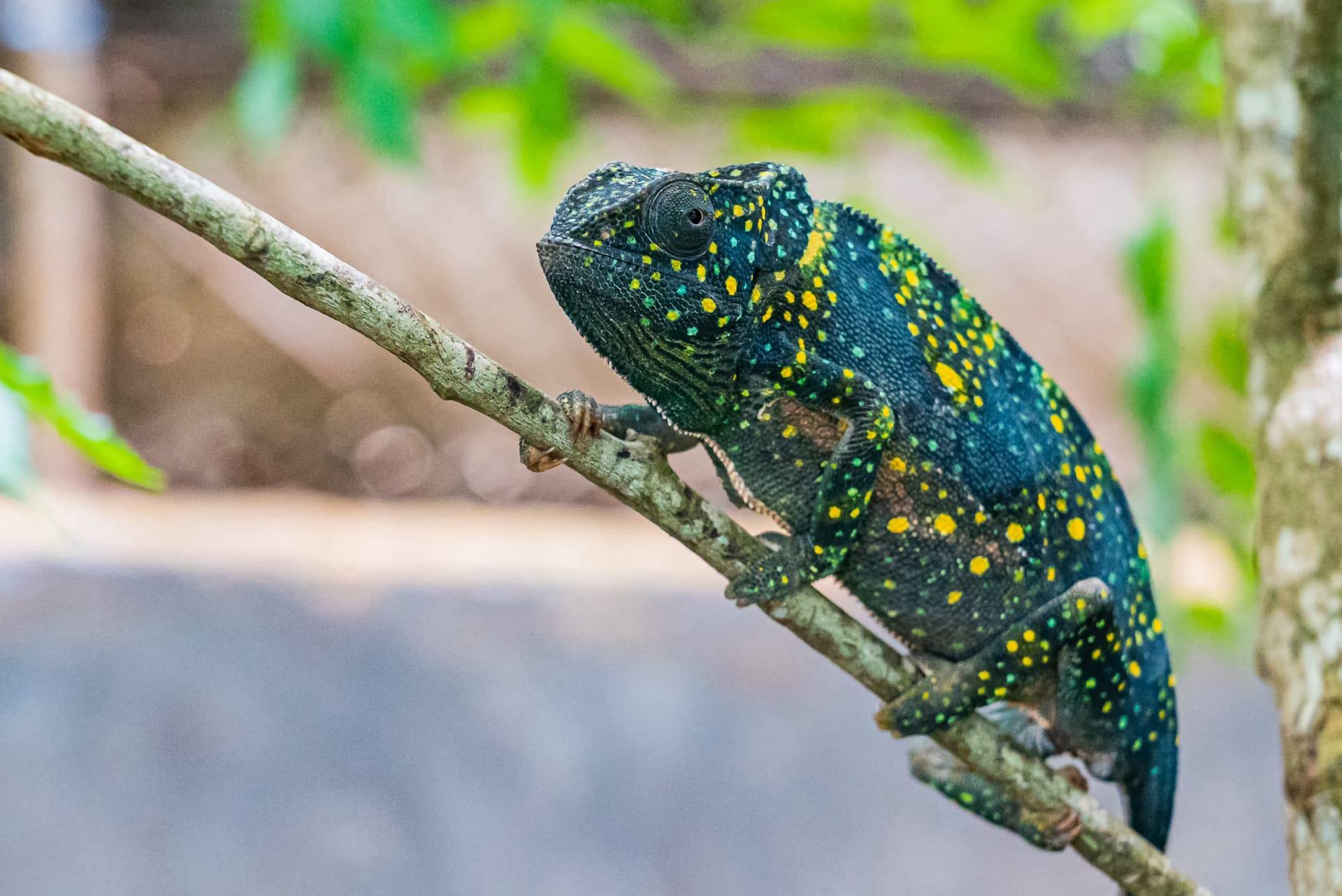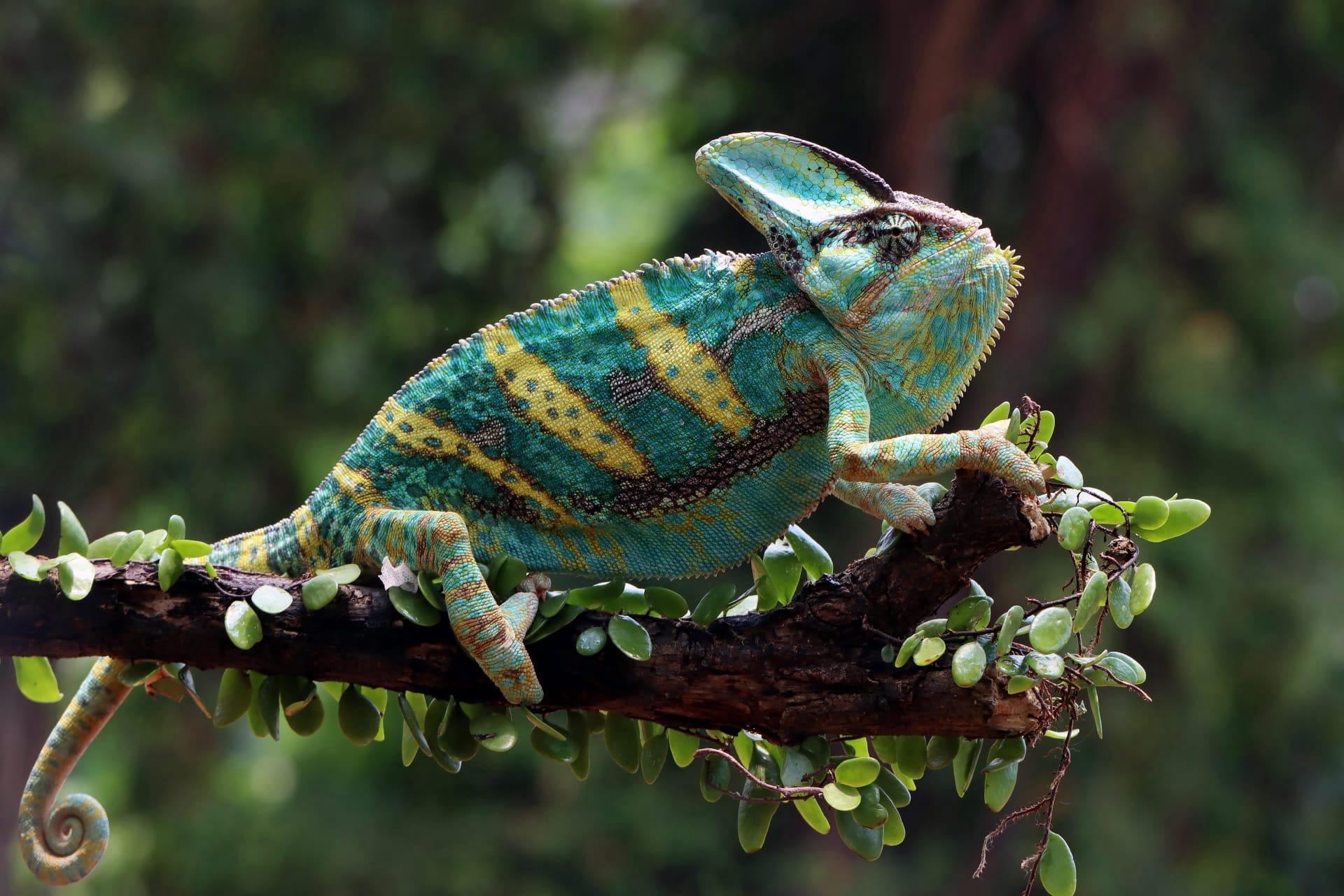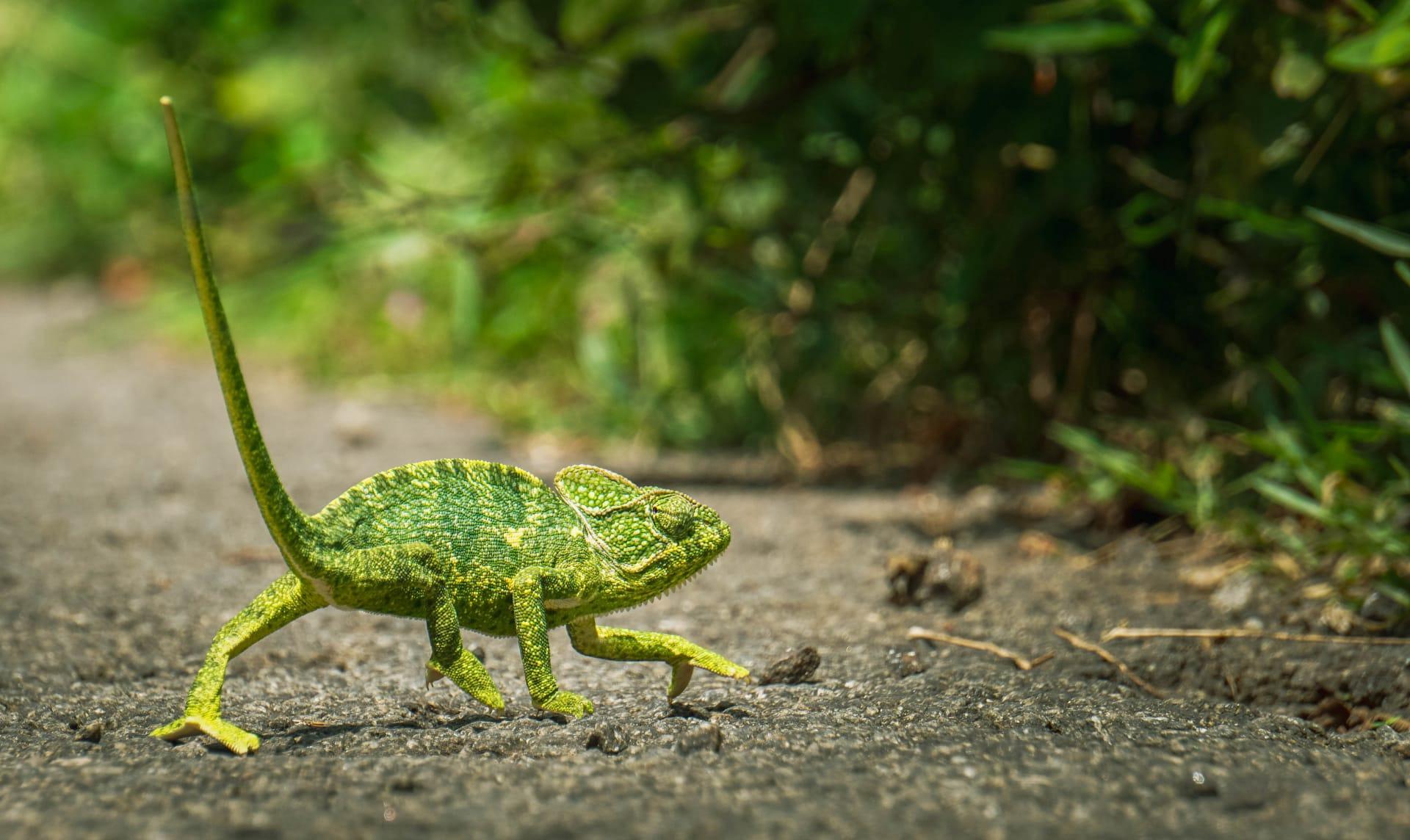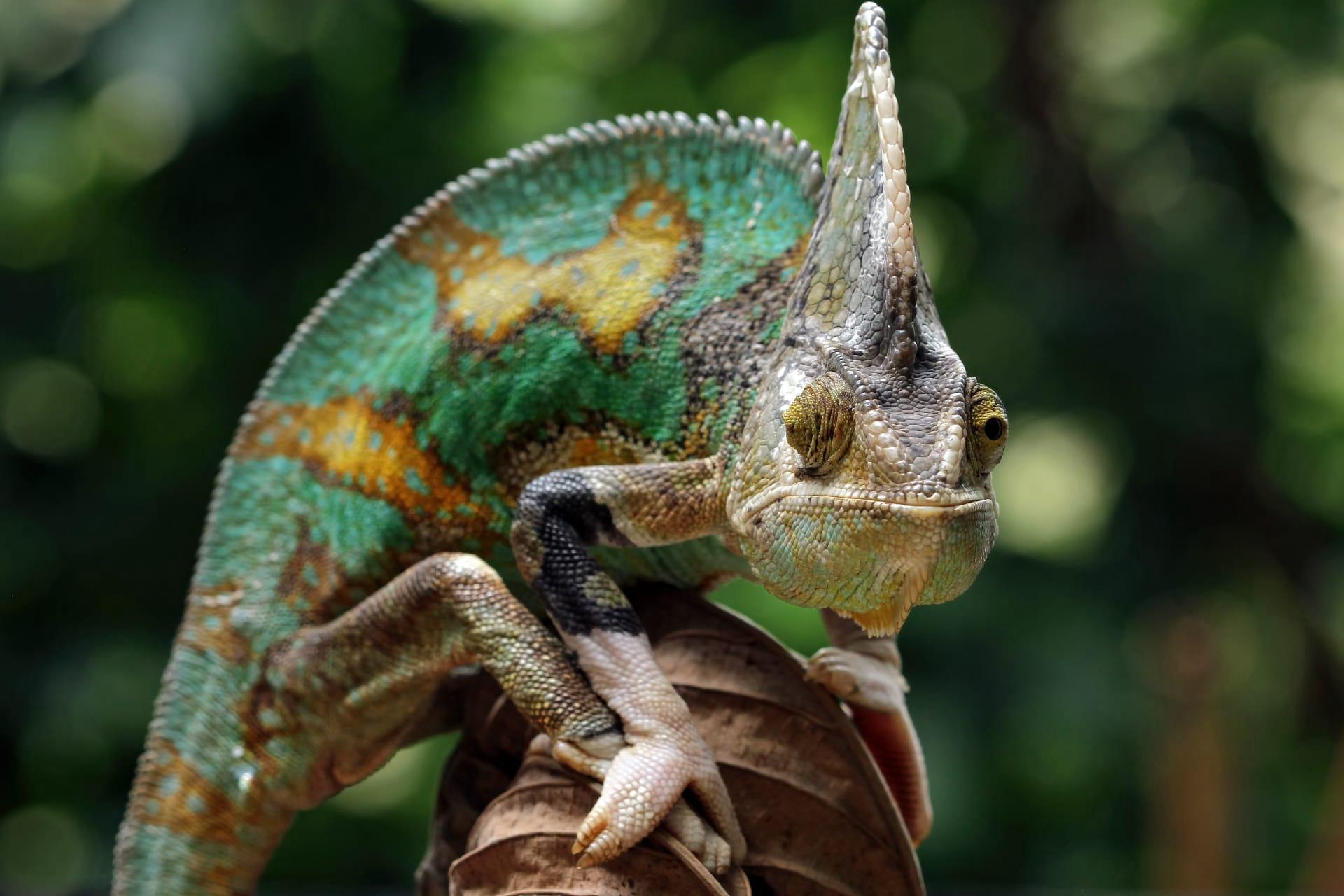1
Veiled chameleons, or Chamaeleo calyptratus, are known for their impressive ability to change colors, but it's not just for camouflage as many think. These color changes communicate emotions and physical states. For instance, males show bright colors when courting females or when they are agitated, turning duller when they are stressed. The range of colors they can exhibit is vast, including vibrant blues, greens, yellows, and even purples.
Another fascinating aspect of veiled chameleons is their unique eyes. Each eye can pivot and focus independently, allowing them to look in two different directions at once. This remarkable vision capability lets them have a 360-degree view of their surroundings. They can focus both eyes in the same direction to get a sharp stereoscopic view when they spot potential prey or predators, enhancing their hunting and survival abilities.

2
When it comes to diet, veiled chameleons are primarily insectivores, feasting on a diet of crickets, worms, and other insects. However, they have a unique trait – they also eat plant material, which is unusual for chameleons. This diet includes leaves and flowers, providing them with water and additional nutrients. This adaptation is particularly useful during dry periods when water is scarce.
Veiled chameleons also have a distinctive physical feature - their casque, the helmet-like ridge on their heads. This casque isn't just for show; it helps them survive in their native habitats. It acts as a water collection system. Rainwater collects on the casque and flows down into the chameleon's mouth, ensuring they stay hydrated. This adaptation is vital in the arid environments of the Arabian Peninsula, where they originate.

3
The tail of the veiled chameleon is another extraordinary feature. It's prehensile, meaning it can grasp and hold onto branches and twigs. This adaptation is crucial for navigating their arboreal lifestyle, providing stability and balance as they traverse through trees and bushes. Their tail can curl up tightly, forming a spiral when not in use, and can support the chameleon's entire body weight.
Reproduction in veiled chameleons is quite unique. Females lay a large number of eggs per clutch, usually between 35 to 85 eggs, which is one of the highest among chameleon species. The eggs are buried in sand or soil and require a lengthy incubation period of about six to nine months. Interestingly, the temperature during incubation can determine the sex of the hatchlings. Higher temperatures tend to produce more male offspring, while lower temperatures result in more females.

4
Veiled chameleons have a rapid growth rate, which is quite unusual for reptiles. They can grow from hatchling to adult size in just a year. This fast growth requires a lot of energy, so young chameleons eat more frequently than adults and have a higher protein diet. This rapid growth is advantageous as it allows them to reach sexual maturity quickly, essential for a species with a relatively short lifespan of about 5 to 8 years in the wild.
These chameleons also exhibit a remarkable defense mechanism. When threatened, they can puff up their bodies, hiss, and open their mouths wide to appear more intimidating. This display is often effective in deterring predators. Additionally, their skin can take on a darker coloration when they are stressed or trying to absorb more heat, showcasing their ability to adapt their appearance in response to environmental factors.

5
Veiled chameleons are not just solitary by nature but also highly territorial. Males especially exhibit aggressive behavior towards other males in their territory. They engage in colorful displays, body inflation, and head bobbing to assert dominance and ward off intruders. These territorial battles, while mostly display-based, can sometimes escalate to physical confrontations.
Interestingly, veiled chameleons have a specialized tongue that is as long as their body, including the tail. This tongue can shoot out at incredible speeds, reaching their prey in just a fraction of a second. The tip of the tongue is a bulbous, muscular structure covered in sticky mucus, perfect for snatching up insects. This adaptation allows them to capture prey from a distance, minimizing the need for movement that could alert their prey or predators.